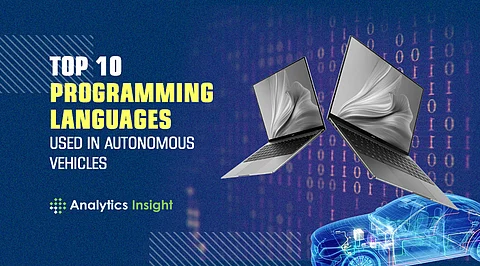
- Insights
- Cryptocurrencies
- Stocks
- White Papers
- Industry
- Geography
- Insights
- Cryptocurrencies
- Stocks
- White Papers
- Industry
- Geography


There are approximately 700 programming languages in the world. In simple words, programming languages give instructions to the computer to perform the task that we require. Programming Languages are the most crucial prerequisite for almost every discipline from Web Development, Machine Learning to Data Science, or any other. Programming and application development have been extremely helpful in scaling up business performances. The developers have to be updated with all these latest trends and indices to stay relevant in the tech market. The programming and developer communities are emerging faster than ever before. Here are the top 10 programming languages that are used in autonomous vehicles.
Java is another top programming that is mostly associated with client-server applications, which are used by large businesses around the world. Java is designed to be a loosely connected programming language, indicating that any application written in Java can run on any platform that is supported by Java. Along with developing and supporting business applications, Java is extensively used in the Android mobile operating system.
Python is widely regarded as a programming language that is easy to learn, due to its simple syntax, a large library of standards and toolkits, and integration with other popular languages such as C and C++. Python is extremely beginner-friendly and hence, one of the first languages that students learn. The language is widely used in a wide variety of applications, including artificial intelligence, financial services, and data science.
SQL is a special-purpose programming language used to interact with databases. It works by analyzing and understanding databases consisting of fields of data within tables. Many fortune 500 companies have built their high-performance database systems, using SQL to query data and perform analysis.
It is the low-level programming language that makes it easier for developers to interact with a computer's hardware assembly language. This programming language, unlike machine language, includes hexadecimal and binary characters designed to be readable.
CSS, or cascading style sheets, is usually applied in conjunction with HTML and governs the site's appearance. While HTML organizes site text into chunks, CSS is responsible for determining the size, color, and position of all page elements.
Ruby is quite similar to Python but it possesses several other advantages. It is an interpreted language that makes it simple enough to use in diverse industrial applications. This feature also enables Ruby to easily develop and implement the necessary scripts for DevOps processes. The programming language is extensively used in web development and is a crucial component for infrastructure management.
C/C++ are traditional languages that act as the foundation of several important technologies. It offers several advantages over other languages, including robust agility and faster implementation. C is a classic low-level programming language, whereas C++ is a superset of C that offers object-oriented features on top.
JavaScript is another popular programming language that is primarily used to build immersive and interactive websites, mobile and desktop applications, and notably video games. JavaScript can be used for the client-side and server-side scripting in many web-based applications.
Also known as C sharp, this language is an object-oriented, general-purpose programming language, widely used in web and desktop programming languages. C# is a popular programming language for coding purposes. The language supports new learners. Because of this, learning C# may be easier than attempting to learn the newer and less-documented languages
React makes it painless to create interactive UIs. Design simple views for each state in your application, and React will efficiently update and render just the right components when your data changes. Declarative views make your code more predictable and easier to debug.
Bitcoin Finds Stability Near US$40k! Is it Price Rally Time?
How Good is the Ultra-Legend Elon Musk at Coding?
Why Synthetic Data and Deepfakes are the Future of Data Analytics?
Why Achieving AGI is Not as Easy as it Sounds? Reality Hits Hard
Top 10 Programming Languages Developers Tesla is Looking for
ML models and Intelligent Automation: Key to Decentralized Learning
